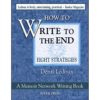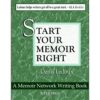“What do you think of my website?”
It’s one of the questions I hear the most from authors, whether they write memoirs or mysteries.
I wish that my answer each and every time was, “It’s fantastic!”… but it isn’t. And more often than not, the problem is with the site’s blog. Oh, how I wish I had a wand to transfer every writer’s blog into a better author blog.
But let’s pause to distinguish between “blog” and “website,” because many people use them interchangeably.
When I say “blog,” I’m referring to a collection of online articles you add to your site on a regular basis in a section identified as your blog. Your website houses the blog as well as other pages – about, press room, books, contact, and so on. Your website is the home for your blog, and the blog is the tool you use to continually add new content to the site.
With that as the backdrop, here are three easy things you can do to improve the appearance, content, and visibility of your blog so it works hard to get – and keep – visitors to your website.
1. Break up the text with subheads and bullets.
Paragraph after paragraph of nothing but text is deadly for a blog because of the way we read online.
When you think of web writing, think of the “Idiot’s Guide” book series layout, with lots of subheads, call-outs, and boxed text. We need you to help our eyes by “chunking up” the text with subheads and, when appropriate, bullets or numbers.
When offering how-to steps, number them. Look for ways to use bullet points to break up dense text.
2. Always use at least one image in every post.
Quite simply, blog posts with images draw in more readers than blog posts without images. They add visual interest, provide the white space needed to give our eyes a rest, and break up the text. Make sure your images are relevant to the content, though. If there’s no connection, the image just confuses readers.
Popular image options include:
- Photos
- Screenshots (these help when you’re providing instructional content; I grab them with the free Jing software from TechSmith)
- Logos
- Product images
If your blog post is long and you can’t add visual variety with bullet points, add multiple images to break up the text so it’s less visually daunting. One study recommends one image for every 350 words of text.
Here’s how I did it in a recent epic post, “What should I send to my author e-mail list?”
3. Add social sharing icons visitors can use to share what they like.
Most of my social network updates are links to great content I’ve found on blogs. If it’s easy to share, I’ll share it. If it takes too much work, I won’t.
I recently came across a killer post that I wanted to share with several author groups on LinkedIn. Without essential sharing icons to help me do that quickly and easily, I had to copy the URL, use the LinkedIn search box to find each group one at a time, and paste the URL with related text into a “start a discussion” form in every group.
Oh wait … no I didn’t. I didn’t have time for all that.
Everybody loses out when you don’t make it easy for people to share your blog posts.
My blog uses a floating share bar on the far left. It stays with you as you scroll so that no matter where you are on an article, you can share a link to it with a variety of social networks. It’s generated by a WordPress plug-in called Social Widget, but Digg Digg and AddThis are other options.
A few resources
Here are a few resources that might help you continually improve your blog’s appearance and content. I refer to them often.
- Problogger: Check out the helpful site content, subscribe to the newsletter, and bookmark the blog. You’ll get great information from a blogging Ninja.
- Copyblogger: Subscribe to the blog; read up on past articles. While the blog is often about how to write well, there’s lots of information here that can help you improve the reader experience.
- Neil Patel on blogging: This link takes you directly to an article about improving your blog posts.
You’ve got great material on your blog. Now write a better author blog. Make sure you’re presenting it in a way that invites people to stay, read, and share.










